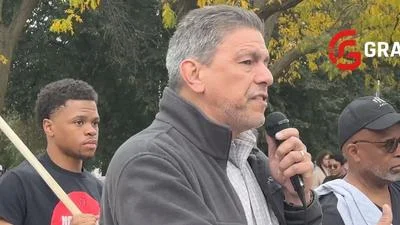Chicago Police Department
Chicago Police Department
A recent report showing that the Chicago police were nine times more likely to stop Blacks than Whites over 2018 and 2019 presents an incomplete and potentially misleading profile of law enforcement practices in the city, says Jason Johnson, president of the Law Enforcement Legal Defense Fund out of Washington D.C.
The report, by the team overseeing the court-ordered reforms of the Chicago Police Department (CPD) - just as reports of other police departments under consent decrees - fails to take into account additional critical variables, including the crime victims, Johnson says.
“What these reports don’t consider is that police are going to target their efforts in higher crime areas,” Johnson, who as deputy police commissioner in Baltimore implemented that city’s consent decree from 2016-2018, told Chicago City Wire. “So you really have to look at where the crimes are occurring and who the victims are.”
The 140-page report looks at the impact of a 2015 a “stop and protective pat down” settlement agreement between the Chicago Police Department (CPD), and the American Civil Liberties Union of Illinois (ACLU). The report’s executive summary said that “stop rates were correlated both with Black and Latino residential share and crime rate in the district.” It also said that the report “did not attempt to explain any observed disparities between racial/ethnic groups.”
The CPD is in its fifth year of a federal consent decree to reform its policing policies.
Johnson pointed to a Department of Justice report on policing in Minneapolis – the police department there is about to go under a federal consent decree.
Commenting at a June 16 press conference on a DOJ report, U.S. Attorney General Merrick Garland said that “based on our review of the data, MPD officer stop, search and then use force against people who are black and Native American at disproportionate rates.”
But Johnson said that “a difference does not prove discrimination.”
“Any serious criminologist or statistician would test other variables before concluding that race explains the variations in police interactions,” Johnson wrote in a recent commentary in the Wall Street Journal. “While black and Native American Minneapolis residents are more likely to encounter police, they are also more than three times as likely as other residents to be victims. Without adjusting for where and when the offense occurred and who was the victim, the Justice Department is guilty of cherry-picking facts to fit its conclusion.”
Speaking to Chicago City Wire, Johnson said that when it comes to consent decrees “the cure is worse than the disease.”
“Consent decrees restrict cops from intervening in violent crime,” he said. “Millions and millions of dollars are wasted, and lives are needlessly lost in the process “
In Chicago, the consent decree monitoring team recently released its seventh semi-annual report.






 Alerts Sign-up
Alerts Sign-up